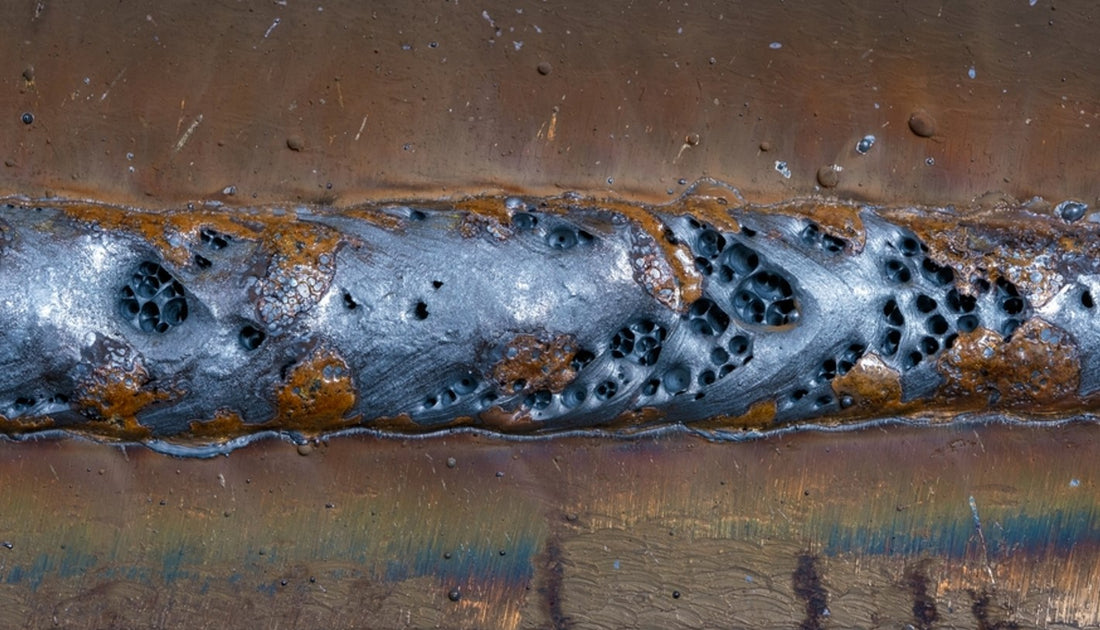Discover What is Porosity in Welding and Its Impact on Architectural Stability
Discover What is Porosity in Welding and Its Impact on Architectural Stability
Blog Article
Recognizing Porosity in Welding: Discovering Reasons, Effects, and Avoidance Strategies
Porosity in welding is a consistent difficulty that can dramatically impact the quality and honesty of welds. As experts in the welding industry are cognizant, recognizing the causes, effects, and avoidance strategies connected to porosity is important for accomplishing durable and dependable welds. By delving into the source of porosity, examining its destructive results on weld high quality, and checking out efficient prevention techniques, welders can improve their knowledge and abilities to create high-quality welds constantly. The intricate interplay of elements adding to porosity needs a thorough understanding and an aggressive method to ensure effective welding results.
Usual Reasons of Porosity
Porosity in welding is mostly brought on by a combination of factors such as contamination, inappropriate shielding, and insufficient gas insurance coverage throughout the welding procedure. Contamination, in the form of dirt, oil, or rust on the welding surface, creates gas pockets when heated, resulting in porosity in the weld. Improper shielding occurs when the shielding gas, frequently utilized in processes like MIG and TIG welding, is not able to completely secure the molten weld pool from reacting with the bordering air, causing gas entrapment and subsequent porosity. Furthermore, inadequate gas coverage, frequently because of incorrect circulation prices or nozzle positioning, can leave components of the weld vulnerable, enabling porosity to create. These aspects jointly add to the formation of spaces within the weld, damaging its stability and possibly causing structural problems. Recognizing and dealing with these usual reasons are essential steps in avoiding porosity and guaranteeing the top quality and strength of bonded joints.
Impacts on Weld Top Quality
The visibility of porosity in a weld can significantly compromise the total quality and honesty of the welded joint. Porosity within a weld develops gaps or tooth cavities that compromise the framework, making it more at risk to breaking, deterioration, and mechanical failing. These gaps function as stress concentrators, minimizing the load-bearing ability of the weld and boosting the probability of premature failing under used stress. Furthermore, porosity can also work as possible websites for hydrogen entrapment, further intensifying the destruction of the weld's mechanical residential or commercial properties.
Moreover, porosity can prevent the effectiveness of non-destructive screening (NDT) methods, making it challenging to discover various other defects or gaps within the weld. This can bring about significant security issues, particularly in vital applications where the architectural integrity of the welded parts is vital.

Prevention Techniques Review
Offered the damaging impact of porosity on weld top quality, efficient prevention techniques are essential to preserving the structural honesty of bonded joints. One of the key prevention methods is comprehensive cleaning of the base products prior to welding. Impurities such as oil, grease, corrosion, and moisture can add to porosity, so ensuring a tidy job surface is necessary. Correct storage of welding consumables in dry conditions is likewise crucial to avoid dampness absorption, which can bring about gas entrapment throughout welding. Additionally, picking the suitable welding parameters, such as voltage, present, and travel rate, can aid lessen the threat of porosity formation. Making certain sufficient shielding gas circulation and coverage is one more essential avoidance method, as inadequate gas protection can lead to climatic contamination and porosity. Proper welder training and certification are crucial for carrying out preventive procedures effectively and regularly. By incorporating these prevention methods right into welding methods, the incident of porosity can be dramatically decreased, causing more powerful and a lot more trustworthy bonded joints.
Importance of Correct Protecting
Proper shielding in welding plays an essential role in avoiding climatic contamination and making sure the honesty of bonded joints. Shielding gases, such as argon, helium, or a blend of both, are frequently used to protect the weld pool from reacting with components in the air like oxygen and nitrogen. When these reactive aspects come right into contact with the hot weld swimming pool, they can cause porosity, causing weak welds with minimized mechanical great post to read homes.

Insufficient securing can result in different issues like porosity, spatter, and oxidation, compromising the structural integrity of the bonded joint. Consequently, sticking to correct protecting practices is necessary to produce top quality welds with very little problems and ensure the durability and dependability of the welded elements (What is Porosity).
Surveillance and Control Techniques
Just how can welders efficiently monitor and regulate the welding process to make certain optimal results and prevent problems like porosity? One trick method is with using innovative monitoring innovations. These can consist of real-time i thought about this surveillance systems that offer comments on criteria such as voltage, current, take a trip rate, and gas flow prices. By continuously keeping an eye on these variables, welders can identify inconsistencies from the optimal conditions and make prompt modifications to avoid porosity formation.

Furthermore, applying proper training programs for welders is important for keeping track of and managing the welding procedure successfully. What is Porosity. Informing welders on the relevance of keeping regular parameters, such as proper gas protecting and take a trip speed, can aid protect against porosity issues. Routine analyses and certifications can likewise make sure that welders are competent in monitoring and controlling welding processes
In addition, making use of automated welding systems can enhance monitoring and control capacities. These systems can specifically manage welding criteria, lowering the chance of human mistake and making sure consistent weld top quality. By integrating advanced surveillance innovations, training programs, and click over here now automated systems, welders can effectively keep an eye on and manage the welding process to reduce porosity problems and achieve high-quality welds.
Conclusion

Report this page